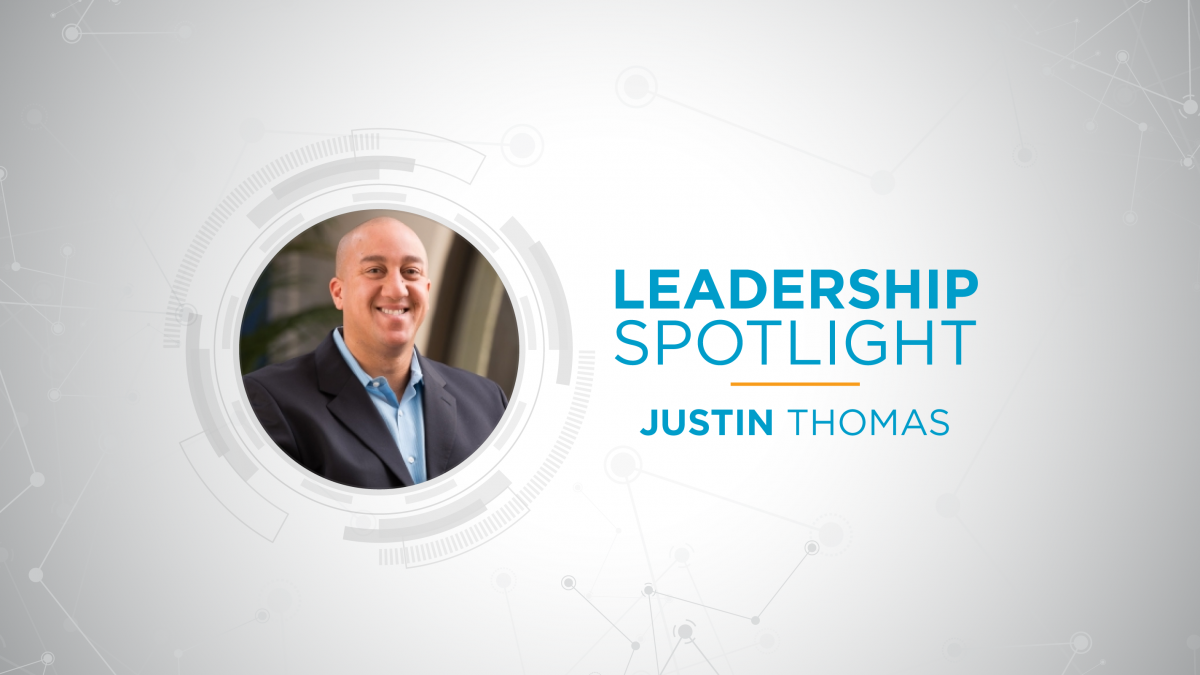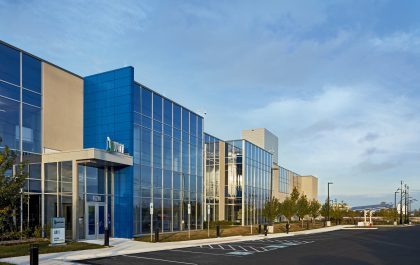Justin Thomas on Cooling and Powering the Data Center of the Future
Long before the COVID-19 global pandemic forced us out of our offices, into our homes and onto the Internet for everything from video conferencing to digital entertainment, the role that technology was playing in our lives – both personally and professionally – was growing exponentially.
As the role of technology in our lives increased, so did the need for more compute and storage. That led to a need for data centers in higher quantities and with much higher densities to power and cool the servers running today’s most demanding applications. And that has led to the data center industry innovating, embracing new technologies and constantly looking for new and better ways to operate.
One person who has seen all of this transpire is Justin Thomas, CTO of Vantage Data Centers. We recently had the opportunity to sit down with Justin to discuss why he entered the data center industry, how the industry has evolved over time and what some of the industry’s largest challenges are today.
Interview with Justin Thomas

Data Centers Today (DCT): Can you tell our readers a bit about your background? What is your current role, and what are your responsibilities? Where did you get your start, and what led you to the data center industry?
Justin Thomas: I have been fortunate enough to spend most of my career in the data center industry. Before joining Vantage, I started designing mission-critical electrical systems for a leading electrical subcontractor. Although I was a technically talented electrical engineer, it wasn’t what I was most passionate about. I was more interested in and passionate about the business, profitability and bigger picture.
My current role as CTO of Vantage is focused on development and engineering. On the development side of the house, I work on the acquisition of greenfield and brownfield real estate for data center construction. I also focus on identifying strategic M&A opportunities.
On the engineering and technical side of the house, I help oversee product development and the evaluation of new and emerging technologies for the physical data center infrastructure. In this capacity, I also focus on innovation – creating new technologies and identifying unique opportunities to apply common technologies from other industries into the data center sector.
DCT: With 10 years at the company, you are one of Vantage’s longest-tenured employees. At Vantage, your career advanced from Director of Engineering and Construction to now Chief Technology Officer. How have you seen the company and the industry evolve in the last decade?
Justin Thomas: Traditionally, data center end users would follow a progression – moving from retail data centers to wholesale data centers and then – eventually – to self-build as they grew. Over the last decade, the industry has shifted away from that progression as end users have moved towards leveraging cloud services.
This has led to massive growth in the hyperscale market since many of the hyperscalers and cloud providers cannot keep up with demand and always build their own data centers. The result has been a huge market opportunity for providers like Vantage to meet that demand profile.
Technology advancements, including virtualization and types of compute – such as AI and cloud compute – have also shifted data center use. We are seeing users with requirements beyond the limits of traditional compute from server architecture. To meet those requirements, CPU is being augmented with GPU and FPGAs. Depending on their architecture, the GPU requires a ton of power with a complimentary speed in processing.
Pairing traditional power distribution with high-density applications can be costly and a huge premium if thought isn’t given to optimizing the infrastructure as the rest of the stack is optimized. That’s because the hardware needed for predictive AI (20-35kW/rack) requires anywhere from four to seven times the power of a standard rack (5kW/rack).
Vantage is taking proactive steps and embracing new solutions to meet the power requirements of higher density racks while still enabling for power redundancy. These new solutions also offer customers the flexibility to have the necessary number and density of racks into their data center space to meet the requirements of their applications.
DCT: As a data center industry veteran, what are some of the challenges facing the data center sector now?
Justin Thomas: Everything that I laid out regarding power and rack density is a challenge across the industry. But, while power is a challenge, it can be solved with planning and optimization. The real challenge is cooling. Traditional air cooling is limited to 20-25kW/rack peak. After hitting the limitations of traditional air cooling, data center providers must evaluate the non-traditional cooling solutions to accommodate today’s power-hungry applications.
There are a number of options for cooling aside from traditional air cooling, ranging from easier-to-implement solutions to very complex and complicated solutions that have yet to receive widespread adoption across the industry. One example is liquid to rear door heat exchangers, which keep things relatively simple, but shift the data center operator’s responsibility from providing an SLA on the environment to providing an SLA on the temperature of the fluid. This is a solution that Vantage has focused on heavily to support its ever-changing cooling requirements.
Areas that are still emerging and not prevalent – especially in the wholesale data center provider product offering – include the complicated water to chip solution and the futuristic liquid immersion. The water to chip approach is rather complicated, requiring a large amount of valving, piping and connections. This approach also could result in the occasional leak within the server itself.
Liquid immersion is made possible by the removal of moving parts in drives and is an interesting, yet challenging, medium for high-density applications. This approach delivers amazing power usage effectiveness (PUE) compared to other systems because the heat transfer occurs at the chip. However, it’s a technology that is still being evaluated and tested, and is in need of further development.
DCT: What are some of the new technologies that are being incorporated into the data centers that Vantage is building to support today’s applications such as HPC, AI and machine learning?
Justin Thomas: In recent years, mechanical cooling topologies have been the biggest challenges in the densification of racks and compute. Data centers are built as assets with 20-plus year lives, so Vantage is taking a forward-looking view to ensure technologies like water to the rack, immersion cooling and other cooling topologies can be leveraged at a future date within our current buildings.
Vantage also self-performs the building automation systems and spends a lot of time building proprietary controls to optimize the equipment and the PUE based on the operational space requirements. Tuning the loops, chillers, CRAHs and sequencing becomes highly complex and something that Vantage is very proud to drive.
Vantage has also partnered with several of our customers to mimic monitoring points. By doing so, their leased facilities have the same metrics and monitoring as their owned facilities. This has been done without manufacturer or proprietary control system limitations that outsourced building automation systems usually have inherent in their design.
DCT: Why would you encourage the next generation of IT and technology professionals to seek a career in the data center industry? What would you suggest that the next generation of data center professionals do and learn to prepare themselves for working in the sector?
Justin Thomas: Between IoT, virtualization of workload, cloud compute, AI, machine learning, autonomous driving and other new and emerging technologies, the data center industry has extreme growth potential. It also has some big challenges regarding finding ways to minimize the natural resources it utilizes.
We need more talented IT and technology professionals to enter the industry to meet demands from growth and to find new ways to drive environmental stewardship. We need the current and next generation data center workforce to drive improvements at all layers of the IT stack, as well as optimize how data centers are built and deployed to minimize the carbon footprint and the amount of utilities required for power and cooling.
These are exciting challenges that the next generation of data center professionals will get to work on and help overcome. And the industry is growing, which makes it an industry with excellent job security.
DCT: As a leader, who has inspired you the most and why?
Justin Thomas: I’ve had a lot of great mentors throughout my career, both direct influences and public figures. For me, I have been inspired heavily by my parents.
My mom was a teacher, and my love of knowledge and continued growth was instilled at an early age. My father rose from entry level to a senior executive before he retired, and many of my business principles and approach to leading teams and individuals were influenced by him.



